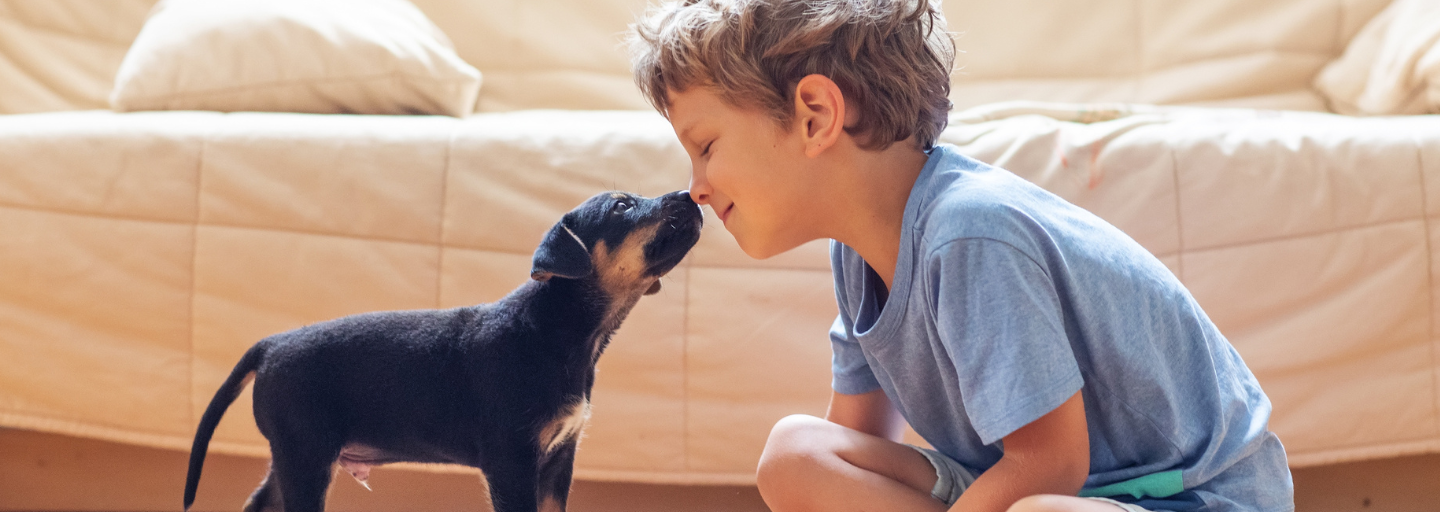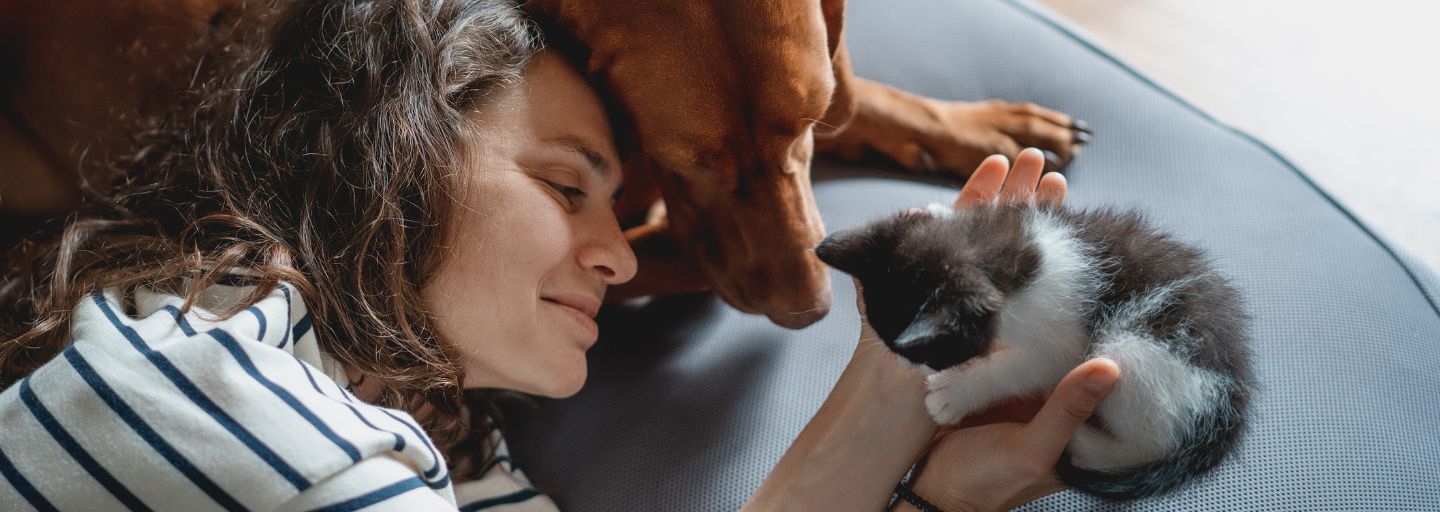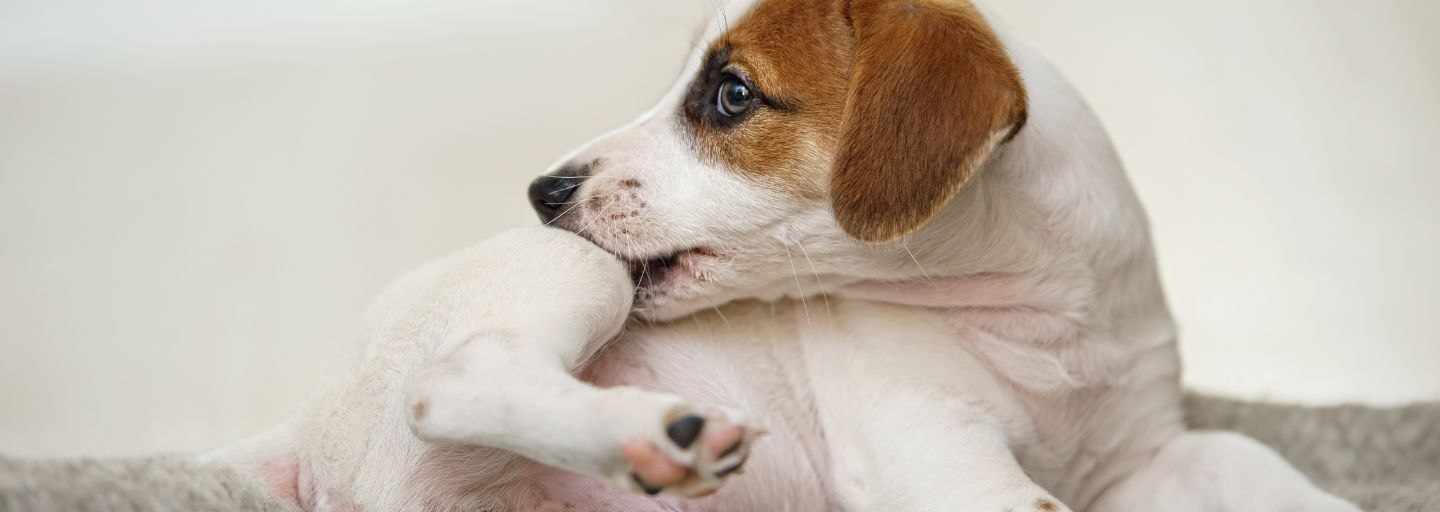Welcoming a new pet to your existing furry family members requires careful steps to ensure a smooth transition. Whether you're introducing a dog to a cat or a puppy to an older dog, following these guidelines will help foster a positive relationship between them.
Introducing a Puppy to an Older Dog
- Choose a Neutral Meeting Place: Find a location where your older dog won't feel territorial. Initially, introduce them in your garden if the puppy hasn't completed all vaccinations. Let the puppy explore the surroundings.
- Make Controlled Introductions: Put both dogs on leads and allow them to approach each other. If necessary, use a head-collar for larger or excitable dogs. Keep the leads loose and offer reassurance while ignoring any whining or barking.
- Encourage Calm Interactions: Reward calm behavior with gentle strokes, calm words, and small treats. Stay calm yourself if either dog becomes over-excited. If needed, separate them briefly before trying again.
- Keep Interactions Short: Make frequent but brief introductions, gradually increasing their duration. With time, they should bond and become friends.
- Wait for an Indoors Invitation: Allow your older dog to invite the puppy indoors. Keep both dogs on leads until the puppy has explored and your older dog is accepting them calmly. Reward acceptance with praise and gentle strokes.
Note: Ensure your older dog's vaccinations are up to date before introducing the puppy for their safety and health.
Introducing Another Adult Dog to Your Existing Dog
- Use Leads and Neutral Ground: Keep both dogs on leads during the introduction, especially if they're large, nervous, or excitable. Choose a neutral location unfamiliar to both dogs.
- Allow Investigation: Let the dogs sniff and investigate each other while on leads. If growling or barking occurs, separate them and try again once they have calmed down.
- Seek Professional Help if Necessary: If multiple attempts fail to establish a positive relationship, consult a professional behaviorist recommended by your vet.
Introducing a Dog to a Cat or Kitten
- Ensure a Relaxed Environment: Allow your dog and cat to adjust comfortably to their new surroundings. Be patient, especially if your cat hasn't lived with a dog before.
- Ensure Safety: Keep your cat or kitten in a secure area where the dog can't reach them. Keep the dog on a lead during initial interactions.
- Reward Calm Behavior: Praise your dog for staying calm, even if they bark excitedly. Maintain your own composure.
- Short Sessions and Frequent Breaks: Conduct brief interactions in different rooms multiple times a day to familiarize them with each other's presence. Use a lead for the dog and give your cat breaks from the interaction.
- Gradually Allow Off-Lead Time: Supervise them until you're confident they will get along. Only let the dog off the lead when they won't react aggressively or chase the cat. Ensure the cat has dog-free zones to retreat to.
- Separate at Mealtimes: Prevent food stealing by separating the cat and dog during meals.
Note: Place the cat's litter tray out of the dog's reach to avoid scavenging behavior.
Remember, it's not uncommon for cats to be independent and potentially ignore the dog's presence. Given time and individual spaces, most cats and dogs can develop a friendly relationship on their terms. Seek professional advice if your dog exhibits persistent excitement or aggression towards your cat.



